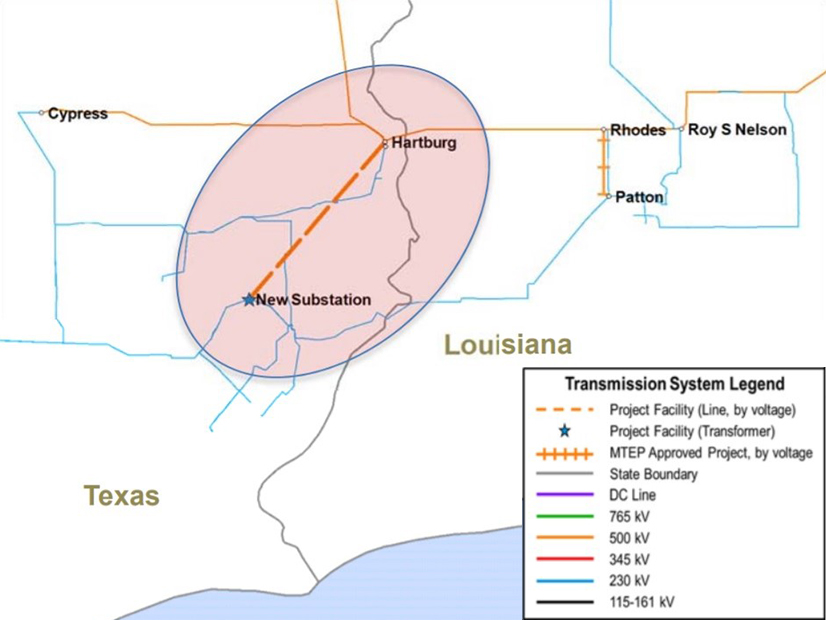More than four years since it approved the project, MISO announced this week it will reanalyze the controversial Hartburg-Sabine Junction project in East Texas for a fresh look at its effectiveness.
Speaking at the Planning Advisory Committee’s meeting Wednesday, MISO Senior Manager of Competitive Transmission Administration Brian Pedersen said the project’s schedule delays and an “inability to construct” the line has triggered a variance analysis to consider if it is still necessary. He said MISO will re-evaluate the line’s benefit-to-cost ratio.
MISO said the planning analysis can have one of two outcomes: reassigning the project to Entergy Texas to comply with Texas state law or canceling the project because it’s no longer necessary.
The RTO included the 500-kV, $130 million Hartburg-Sabine Junction as a market efficiency project (MEP) in its 2017 Transmission Expansion Plan, selecting competitive developer NextEra Energy Transmission Midwest (NYSE:NEE) to construct most of the line. MISO expected the line to relieve congestion and provide access to lower-cost generation at a benefit-to cost ratio greater than 1.25:1.
In 2019, Texas passed a right-of-first-refusal law that allowed Entergy Texas (NYSE:ETI-P) to take over the construction of the line. The U.S. Department of Justice opposed Texas’ ROFR law as anticompetitive. NextEra filed a federal lawsuit, and the Hartburg-Sabine line remains in legal limbo with a pending appeal. Neither Entergy nor NextEra have broken ground. (See Uncertainty Deepens for Hartburg-Sabine Project.)
In 2020, Entergy issued a request for proposals for a 1.2-GW natural gas and hydrogen plant in Orange County to be in operation by 2025. The $1 billion power plant might nullify the need for the line, according to Southern Renewable Energy Association Executive Director Simon Mahan.
Based on information it receives, MISO still maintains an “on time” construction estimate for August 2023 in its quarterly project information. Stakeholders questioned the reasonableness of a 2023 in-service date given the line’s uncertain status.
Clean Grid Alliance’s Natalie McIntire asked if MISO will use its current transmission planning future scenarios — since updated to include more renewable energy, energy efficiency, electrification and decarbonization — to reassess the project.
Mahan asked whether MISO will factor Entergy’s future Texas plant into the restudy.
Pedersen said MISO will share the study scope and ensuing results at upcoming meetings of the South Technical Studies Task Force. The task force is set to meet May 11, June 8 and July 20.
Mahan also asked if a replacement project could emerge in MISO’s ongoing long-range transmission plan should Hartburg-Sabine Junction fall off as an MEP. The long-range study is set to evaluate MISO South needs in 2023.
Pedersen said an answer to that would be “speculation,” but “any project could show up.”
Hartburg-Sabine Junction is the first MEP that MISO has ever assigned to its South region.
MISO counsel Chris Supino said that should the RTO decide to cancel the project, it must go before FERC for approval.

